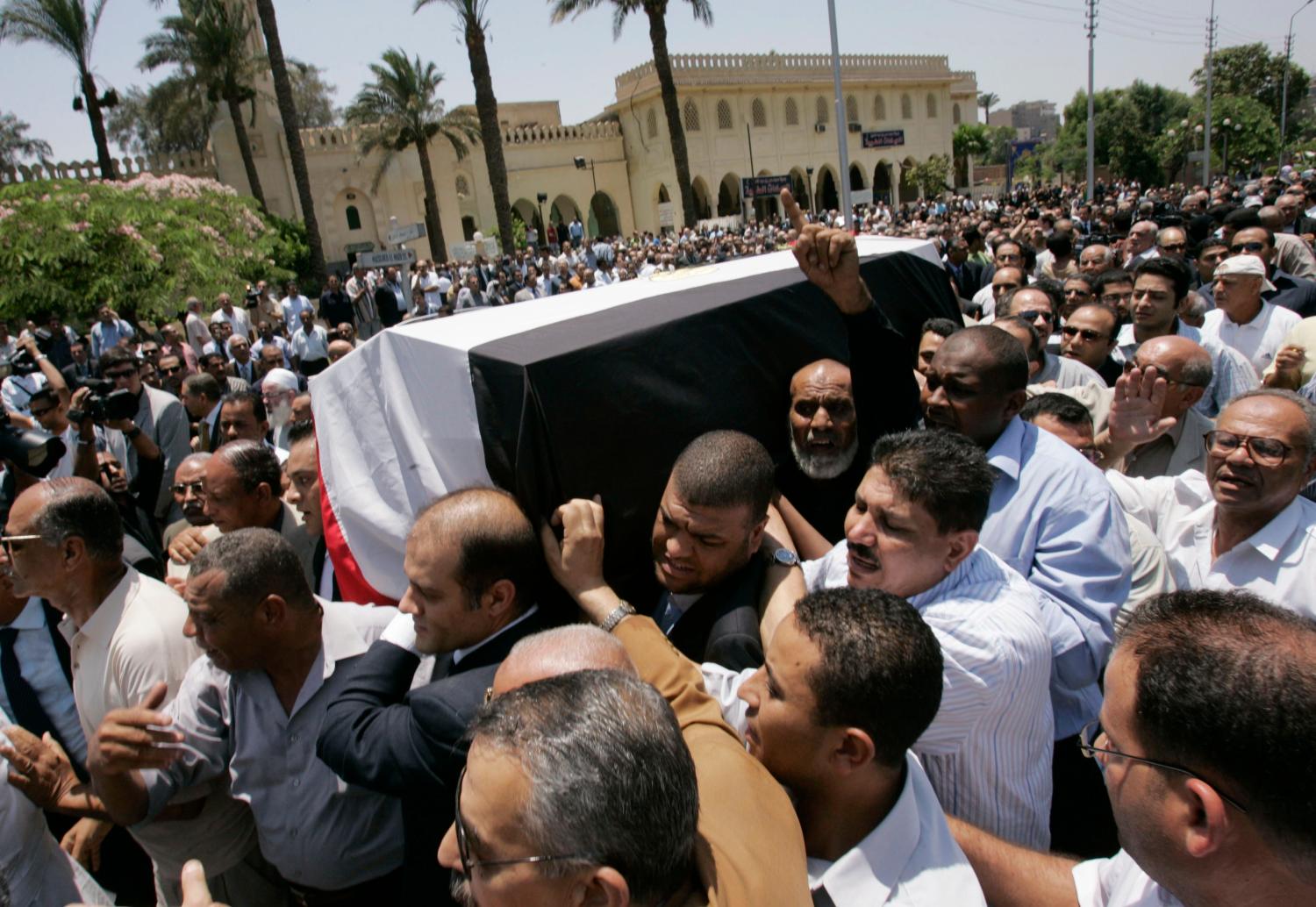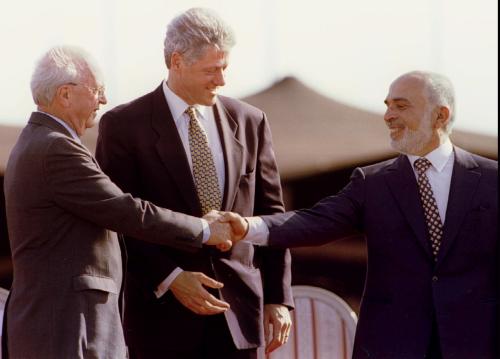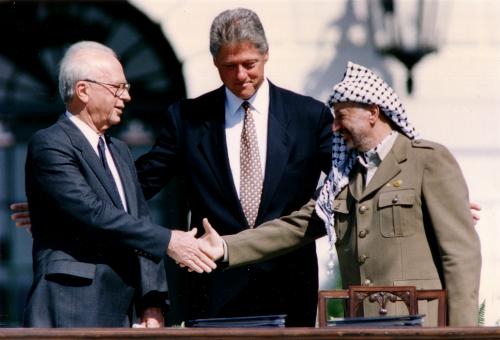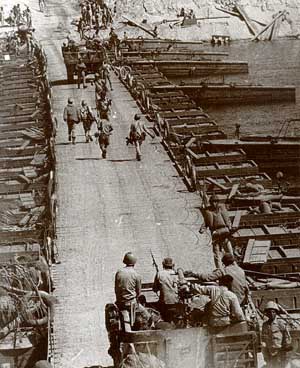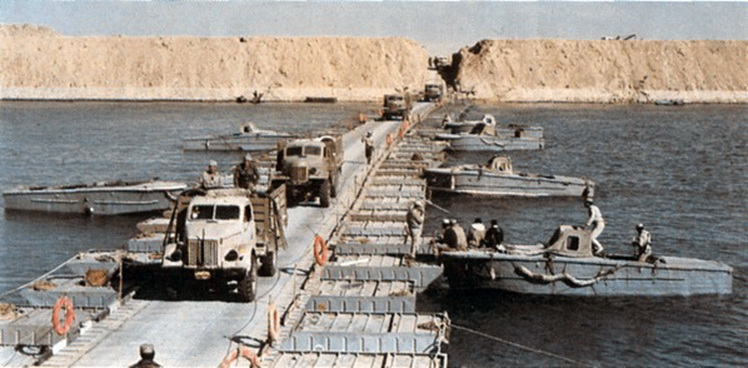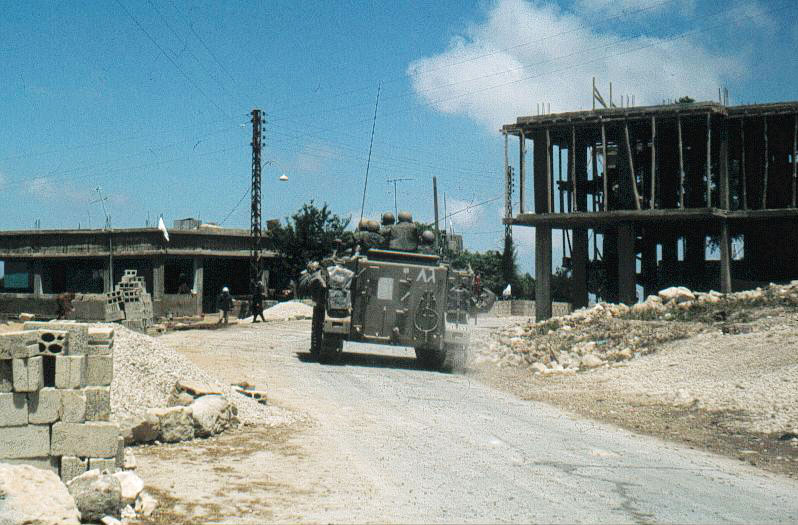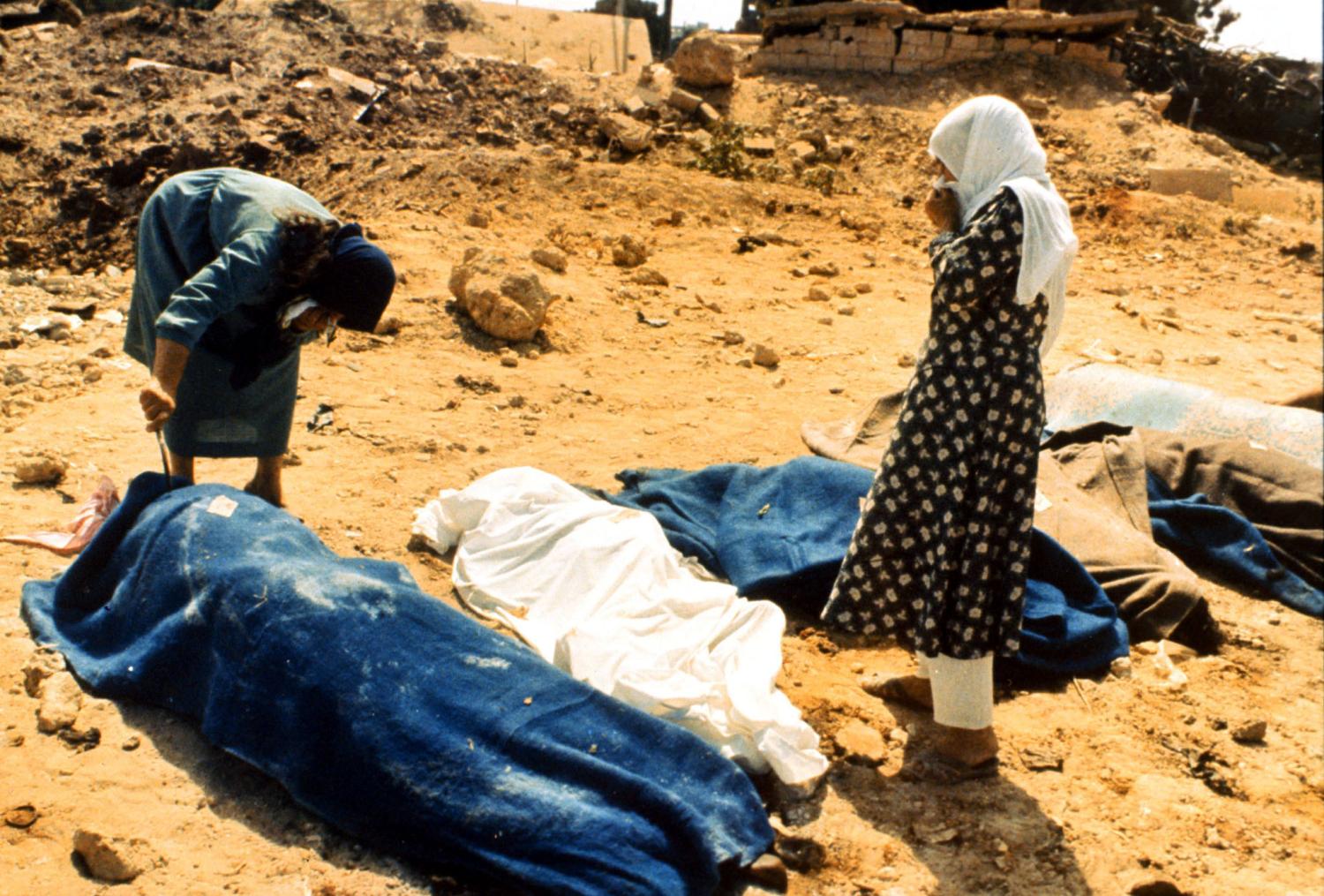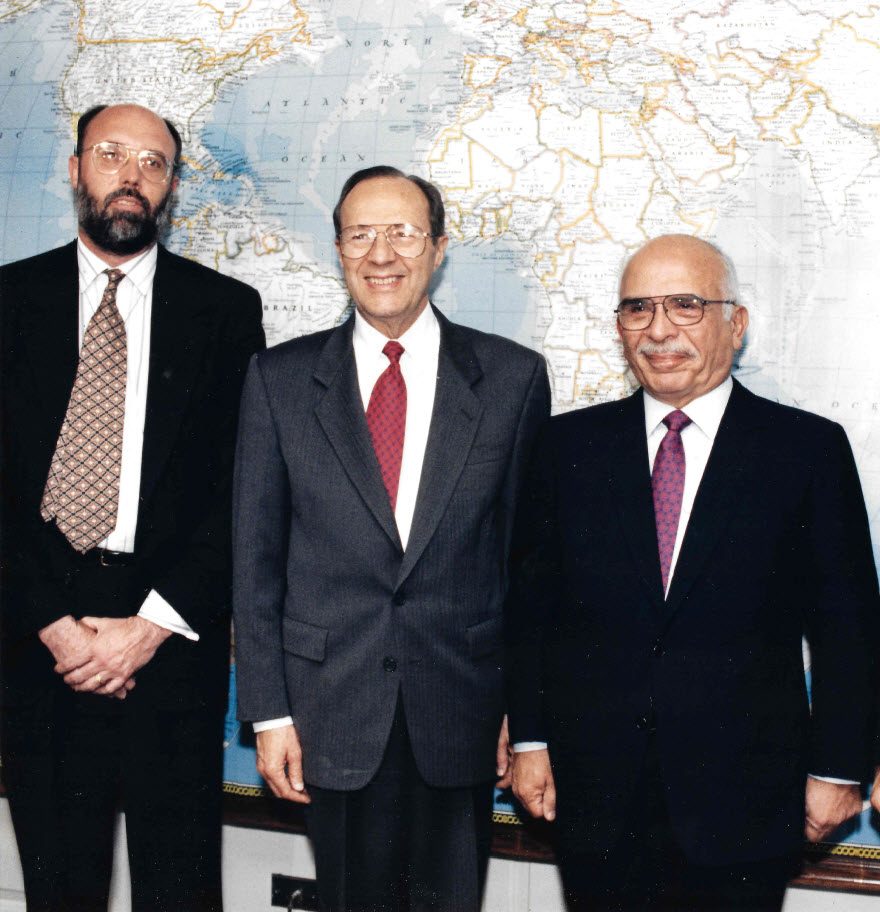The guesthouse of the Israeli Institute for Intelligence and Special Projects, or Mossad, sits on a small hill top overlooking the Mediterranean Sea just north of Tel Aviv. It is a modest structure with a carport, a living room, a bedroom, and several small conference rooms. It also has a kitchen and large dining area. Forty years ago, in 1973, the guesthouse was virtually the only building in the area. Just below it, near the water, is the coastal highway linking Tel Aviv to the Galilee and Haifa. Today, the headquarters of the Mossad is also just below and adjacent to the guesthouse. Armies have marched past this spot since the dawn of history, including Alexander the Great, the Romans, the Crusaders, and the British in 1918. In the early 1970s it was a very lovely place for a meeting, isolated locally but located close enough to Tel Aviv to make it an easy place for senior officials to gather. A top-secret facility, the guesthouse guaranteed its visitors quiet and secrecy. The food was also quite good, especially some of the fish and schnitzel recipes.
On the evening of September 25, 1973, the guesthouse had a very special visitor: His Majesty King Hussein of the Hashemite Kingdom of Jordan, a country Israel was at war with, at least officially. The king had left Amman an hour before on a Royal Jordanian Air Force helicopter to travel to the shore of the Dead Sea, where he transferred to a helicopter of the Israeli Air Force to fly to the guesthouse. With him was his prime minister, Zaid Rifai, and his intelligence chief, General Fathi Abu Talib. It was not the king’s first visit. He had been secretly meeting with Israeli leaders for years, just like his grandfather King Abdullah had before his assassination. Already in 1973 he had met with Israeli officials in May and August. Both times he had warned that the status quo in the region was unsustainable, but he had not sounded any alarm. Hussein understood the value of clandestine diplomacy and was a master of it.
Hussein had asked for this meeting two days before, saying it was “urgent” that he meet. His host was the Israeli Prime Minister Golda Meir, who had been instrumental in starting the dialogue with King Abdullah three decades before. She had adjusted her calendar to make this meeting happen quickly. Born in Kiev, Golda had moved to Milwaukee as a young girl and then to Palestine to join the Zionist movement. With the prime minister was her executive aide, Mordechai Gazit, and the head of the Mossad, Zvi Zamir. In a back room of the guesthouse, a couple of other aides would listen in on the secret conversations remotely by ear phone from listening devices in the living room. Among the listeners was the chief of the Jordan desk in the Israel Defense Forces’ (IDF) Directorate of Military Intelligence (DMI) Lieutenant Colonel Zussia Keniezer, an expert on both His Majesty and the Hashemite Kingdom.1 [Note: In Hebrew the Agaf Modi’in, or Intelligence Branch, is known by the acronym Aman.]
Hussein understood the value of clandestine diplomacy and was a master of it.
The king was coming from an earlier summit meeting in Cairo held between the 10th and 12th of September—it also was an extraordinary meeting. President Anwar Sadat of Egypt was the host and President Hafez al-Assad of Syria was the other guest. Egypt and Jordan had broken relations in 1972, and Syria and Jordan had fought a small war in September 1970. But in Cairo they made up and restored diplomatic relations. The king also got to hear from Sadat and Assad first hand their appraisal of the situation in the Middle East. In flying to Tel Aviv, the king was passing on this assessment with his own analysis.
By 1973, Israel had occupied the Sinai Peninsula, the Gaza Strip, the Golan Heights, East Jerusalem, and the West Bank of the Jordan for over six years. Egypt, Syria, and Jordan had been forced to accept the occupation of lands they claimed title to for those six years, and they were humiliated and angry. The United Nations had sponsored episodic peace talks that had gone nowhere.
Exactly what the king told Golda is still controversial. The earliest accounts of the meeting in Israeli newspapers—in 1993, 20 years after the meeting—claimed the king brought an explicit warning that Syria and Egypt were about to attack Israel, a warning that the prime minister failed to heed, leading to the surprise attack on Israel on October 6, 1973. The former head of the DMI, General Eli Zeira, claimed in 1993 when the story broke about the king’s trip that the prime minister had received a warning of war from “a very senior Arab personality,” which the papers identified as King Hussein.2
The king, not surprisingly, did not want to be seen as a traitor to the Arab nation and a spy for Israel, so he put out the story that he was excluded from any serious war plan discussions in Cairo and only found out about the war when it started on October 6. He liked to recount that he was riding his motorcycle through Amman when his security detachment signaled him to stop, informing him that the war was under way. Thus, he could not have provided a warning of a war he did not know about.
The truth is a bit more complicated than either of these extremes. Based on Israeli and Jordanian accounts published since the king’s death—some of which are based on access to his personal papers—a clearer picture emerges. The king was in fact excluded from the most sensitive Sadat-Assad war conversations in Cairo, but he did get unique and timely insights into their thinking about the overall situation. The king also had his own intelligence sources, especially in Syria. Jordan’s General Intelligence Directorate had recruited a Syrian army division commander who had excellent access to Syrian war plans. Syrian sources, as well as Jordanian, have reported that the major general, who had been recruited in 1971 after Assad’s coup, provided detailed information on Syria’s war plan and its cooperation with Egypt.3
The king told his Israeli hosts that night that Egypt and Syria found the status quo to be untenable. Sadat and Assad would not let the situation continue as it was for much longer. His Majesty was clear: War was coming. Based on his conversations with Sadat and Assad, two of his former adversaries, he was certain the unstable peace would not last much longer. His was an extraordinary first-hand account. He told Golda that the two had asked him directly if Jordan would join in an attack on Israel. He said he had told Sadat and Assad to “leave me alone.” He said he had told Egypt and Syria that Jordan had “already paid a high price for such a partnership in 1967” when the Jordanian army had lost the West Bank and East Jerusalem.4 The implication was clear: If Sadat and Assad had asked him if he would join an attack, it must mean an attack was coming.
Then he turned to his most important point, that Syria was now fully ready for war. On the Syrian front, he said, “a very, very sensitive source in Syria” had told Jordan that it was ready for war, that the army was already deployed in “pre-jump positions” to attack when the order was given. Golda asked the king whether Egypt would join forces with Syria in a war, and the king replied: “I think they will cooperate.”5 It was a clear warning from a very credible source that war was on the horizon in the near term and that it would come on two fronts.
The prime minister asked for a short break and called her top military advisor, Defense Minister Moshe Dayan, at home around midnight. She recounted the gist of the king’s message. Dayan said he was aware of the danger on the Golan and would order some reinforcements to the Heights in the morning. Meir returned to the meeting with the king somewhat reassured.6
Hussein did not tell the Israelis when war would break out. He did not know that on September 25th, and scholars have good reason to believe that the Egyptian and Syrian leadership themselves had not fully finalized the D-day and H-hour for the attack yet. The king was providing strategic warning based on extraordinary access. He was also turning Israel’s strategic thinking on its head: Israel was focused on Egypt as the main threat because it was a larger country with a more competent military; Hussein was saying that Israel’s immediate danger will be Syria, which is ready for war and much closer to Israel’s homeland. His Syrian source later would provide the D-day and H-hour to the king, so he was not really surprised on his motorcycle. The king did not provide that data point to Israel.7 But on the morning of October 6, 1973 he sent his intelligence chief to Damascus, a very unusual move for Jordan.8
The king was hoping against hope that his warning would shake Meir’s complacency and persuade her to take some dramatic action to start a peace process with the Arabs. His brother, Prince Hassan (then also Crown Prince) believes King Hussein wanted to get Israel to realize that the status quo was untenable and that Israel was flirting with disaster. It did not work.9
After the king flew home to Amman, the next day Dayan discussed the warning with the IDF’s chief intelligence officer, General Eli Zeira, his deputy Aryeh Shalev, and other key security officials. They dismissed the king’s warning as too vague and probably just guesswork. The Arabs were too weak to attack. Dayan agreed. He had “utter contempt for the fighting qualities of the Arab armies,” as he later told the American ambassador, and thought Hussein was exaggerating.10 Zeira reiterated his view that the prospect for war was very low.
The prime minister left in the morning for Strasbourg France on a previously scheduled visit to address the European parliament. Then she decided to travel to Vienna, Austria after Arab terrorists hijacked a train filled with Russian Jews leaving the Soviet Union. The Arab terrorist attack may have been designed to deflect Israeli attention away from the Levant to the Danube. The terrorists involved were from the al-Saiqa group, a terrorist organization completely controlled by Syria. If it was intended to distract Israel, it succeeded brilliantly.
Golda would not be back in Israel until late on October 2—so, the top Israeli decisionmaker absented herself from a gathering crisis. Dayan took the report about Syrian preparations seriously enough to travel to the Golan on the 26th to see the situation for himself. He ordered a handful of reinforcements to strengthen the IDF garrison, a move that in retrospect saved the day for the IDF on the Golan, but he too believed war was unlikely. His decision to send the Seventh Armored Brigade to reinforce the normal garrison, the 188th Armored Brigade, doubled Israeli tank strength on the Golan.
Only the analyst, Lieutenant Colonel Zusia (“Zizi”) Keniezer, believed the king should be taken seriously. He had studied the monarch carefully and understood him better than his superiors. Two points were clear to him: The Syrians were in pre-attack position, and their preparations were coordinated with Egypt. He told his boss in the DMI—General Aryeh Shalev, who was in charge of research and analysis— that the “bottom line of what Hussein had to say was that there is going to be war with Egypt and Syria” in the near term. Shalev also dismissed the warning.11 In addition, Zizi shared the gist of his views with his counterpart who commanded the Syrian branch but did not routinely get access to information from the king. Shalev branded Zizi an “alarmist” and refused to listen to his assessment.12
Israeli intelligence failed to see war coming in 1973 because it was wedded to a concept…that the Arabs would not go to war because they would lose, therefore the danger of war was minimal.
Israeli intelligence failed to see war coming in 1973 because it was wedded to a concept (kontzeptziya in Hebrew) that the Arabs would not go to war because they would lose, therefore the danger of war was minimal. All indicators of war preparations and any warnings of war were fed into the concept and then explained away. But the concept was not just an intelligence concept, it was a policy concept that the Israeli political leadership at the top deeply believed. And it was a concept the Israeli public believed, as well. The chief of the Mossad, Zvi Zamir, described Israeli views of the Arabs succinctly: “[W]e scorned them,” and thus the intelligence process and the policy process became a “cross-fertilization breeding disaster.”13
The Israeli intelligence failure of 1973 is thus a classic example of how intelligence fails when the policy and intelligence communities build a feedback loop that reinforces their prejudices and blinds them to changes in the threat environment. In the more than 40 years since the disaster, a wealth of material has emerged on how it happened and why.
The Concept and the Source
The extent of Israel’s intelligence failure in 1973 is still staggering more than 40 years later.
At 2pm on October 6, the holiest day of the Jewish year Yom Kippur, Egypt and Syria launched Operation Badr—named after one of the Prophet Mohammad’s victories. Five Syrian army divisions with 1,400 tanks and 1,000 pieces of artillery attacked the two under-strength IDF brigades on the Golan, which had only 177 tanks and 50 pieces of artillery. Meanwhile, five Egyptian infantry divisions with 1,300 tanks and 2,000 artillery pieces launched themselves across the Suez Canal to fight 450 Israeli soldiers in 16 small forts. Most were poorly trained reservists from the Jerusalem Brigade who had never been in combat before.14
Behind the Egyptian first wave were four more armored and motorized divisions between the canal and Cairo, with 400 more tanks. Behind the so-called Bar Lev line along the canal was a single Israeli armored division with 290 tanks. Behind the Syrians, an Iraqi expeditionary force—with two armored divisions with 500 more tanks—would form in Iraq after the war began and advance to the Golan. Other Arab expeditionary forces from Morocco to Saudi Arabia would fight Israel before the war ended, along with Soviet advisors and Pakistani air force pilots.
Israeli military planning was based on a reserve system. Every Israeli (with few exceptions) served in the army in 1973, but only a small few were in the full-time standing army. Eighty percent of the army was reservists who had to be mobilized to fight.
The intelligence service was critical to defense. They were supposed to provide at least two days’ warning of an attack to allow time for the reserves to be called up, mobilized, and deployed to the fronts on the Suez and Golan. The DMI had promised in writing in 1972 that five to six days of warning was much more likely, indeed virtually guaranteed.15 The warning time would also permit the prime minister sufficient time to assess whether a preemptive air attack was politically advisable to disrupt Arab war preparations.16 The Israeli Air Force (IAF) was the best in the region and its air superiority would produce victory if provided the necessary advance warning.
In 1973, the Israeli intelligence community provided less than a few hours’ warning of attack, despite the king’s strategic advance appraisal, masses of intelligence indicators showing the enormous build-up of the two Arab armies, and an extraordinary human intelligence asset inside Egypt. The Israeli intelligence community, the DMI, and Mossad had demonstrated their quality for many years, and especially in the 1967 blitzkrieg. Israel had excellent signals intelligence collection capabilities using the high ground of Mount Hermon on the Golan and the mountains of the Sinai to listen deep behind enemy lines. The IAF—using manned and unmanned aircraft (it was already pioneering the world in the use of drones to collect intelligence in 1973)—could see behind enemy lines and provide imagery intelligence. Israeli analysts were among the very best in the world. But only the DMI did analysis, the Mossad was purely a human intelligence collection service. It did not have any authority to challenge the military’s estimate.
But the Mossad had “the Source.” It was the Agranat Commission—which the Israeli government appointed to examine why Israel was surprised in 1973, and to recommend how to prevent it from happening again—that first revealed the existence of an Israeli human intelligence source in the Egyptian leadership. The commission’s preliminary report, issued in 1974, did not identify the asset by name but did confirm the Mossad had a very highly placed source in Cairo. The complete report has never been publicly released and is still highly classified. Only in 2012, when more of the report was declassified was it revealed the source’s code name was Babel.17 Israeli authors were able to report that the Source had volunteered his services to the Mossad in 1969 during a trip to London. The Egyptian proved his bona fides by providing scores of documents from the most sensitive parts of the Egyptian national security bureaucracy, including a complete order of battle of the Egyptian military and the detailed plans for Operation Badr.18
The Source’s information was critical to the construct of the concept. First, he kept the focus very much on Egypt and Egyptian thinking. He said that Sadat would not attack Israel unless first, he had other Arab partners, and second, Egypt could blunt Israeli air superiority. To accomplish the second mission, the Source said Sadat was convinced he needed longer-range fighter bombers that could attack the IAF on the ground in its bases in Israel and surface-to-surface Scud missiles to threaten Tel Aviv with a missile war to deter the IAF from striking Cairo. The Russians would have to provide both the aircraft and the Scuds before Sadat would go to war.
This Egyptian concept, as reported by the Source, became the centerpiece of the Israeli concept, which went further. The Israeli concept argued that the Israeli superiority in the air and on the ground was so great that any Arab offensive was doomed to fail; therefore, the Arabs would not go to war for years, if not longer.19 Armed with the Source and all its other collection capabilities, the IDF knew in 1973 the complete order of battle of the Egyptian military, its command structure, its arms and weapons in detail and its plan of attack. Few intelligence agencies in history have ever had so much valuable information about an enemy before battle.
Few intelligence agencies in history have ever had so much valuable information about an enemy before battle.
The Source’s identity was revealed in 2002, 30 years after the war. An Israeli writer identified the Source as a close relative of Egypt’s former president, Gamal Abdel Nasser, whom Israeli intelligence officials called “the son-in-law.” Egyptian journalists identified the son-in-law as Ashraf Marwan, an Egyptian billionaire married to Mona Gamal Abdel Nasser, the daughter of President Nasser. Soon, Israeli authors were providing many more details on the Mossad’s dealings with Marwan. The generals who had fought the 1973 war were also still fighting the debate over “who failed,” so Zamir and Zeira went to court over who had leaked Marwan’s name. An Israeli arbitrator, a retired Supreme Court Justice named Theodore Or, ruled in 2007 that Zeira had been behind the leaking of Marwan’s name to the press.
Less than a month later, on June 27, 2007, Marwan fell to his death from his fifth floor apartment on Carlton House Terrace in London. He had moved there more or less permanently after Sadat’s assassination in 1981 and was a business partner with Muhammad Fayed, then the owner of Harrods department store. He was given a hero’s funeral in Cairo, attended by the then-head of Egyptian intelligence Omar Suleiman, President Hosni Mubarak’s son Gamal, and the head of Al Azhar University and Egypt’s leading Islamic cleric Shaykh Mohammad Sayed Tantawi. Rumors that Marwan was murdered soon appeared. He was said to be writing a book about his life when he died, but no manuscript has yet surfaced.20 President Mubarak described Marwan as “a patriot” who “carried out patriotic acts which it is not yet time to reveal.”
So was the Source a double agent who fed Israel good intelligence so he could ultimately provide a crucial piece of misinformation? Or was he an embarrassment to the Egyptian elite, a member of the inner circle who spied for the enemy and whose betrayal was too shameful to admit? Was he murdered, and if so, by whom? Or did he commit suicide to escape further revelations? We don’t know. Most experts who have looked at the evidence believe he was not a double agent. That was also the conclusion of repeated Mossad counter intelligence assessments of their agent. I tend to agree, the Source was for real. Most Egyptians don’t, they are convinced he was a national hero.
 What we do know is he began providing information to Israel in late 1969 or early 1970 when his father-in-law was still alive and in the midst of the War of Attrition along the Suez Canal. Nasser had begun the War of Attrition in 1968 to pressure Israel to withdraw from the canal; it had escalated into months-long artillery battles along the canal, with deep penetration air raids by the IAF into Egypt. The Soviets provided increasingly sophisticated air defense systems, especially surface-to-air missiles (SAM), to stop the IAF raids. Then in 1970, the Russians sent their own pilots to fight the Israelis. The Source provided unique insights for the IDF into the thinking in Cairo during the war and the Egyptian-Soviet dialogue about the campaign, even the minutes of Nasser’s meetings in the Kremlin. As Aryeh Shalev would later say, in an understatement: “[W]e had some very good sources particularly in Egypt.”21
What we do know is he began providing information to Israel in late 1969 or early 1970 when his father-in-law was still alive and in the midst of the War of Attrition along the Suez Canal. Nasser had begun the War of Attrition in 1968 to pressure Israel to withdraw from the canal; it had escalated into months-long artillery battles along the canal, with deep penetration air raids by the IAF into Egypt. The Soviets provided increasingly sophisticated air defense systems, especially surface-to-air missiles (SAM), to stop the IAF raids. Then in 1970, the Russians sent their own pilots to fight the Israelis. The Source provided unique insights for the IDF into the thinking in Cairo during the war and the Egyptian-Soviet dialogue about the campaign, even the minutes of Nasser’s meetings in the Kremlin. As Aryeh Shalev would later say, in an understatement: “[W]e had some very good sources particularly in Egypt.”21
Marwan approached the Israelis in London to start his espionage career and his meetings with the Mossad took place in the British capital. He was paid 50,000 pounds per meeting and usually brought documents to each session, which he gave to the Mossad. The Mossad also paid for a luxury apartment in Mayfair to be used as the safe house for meetings. Marwan’s access did not stop when Nasser died—to the contrary, he became a protégé and ambassador extraordinaire of Sadat and continued to have entre to Egypt’s secrets. Zvi Zamir would meet with him personally on many of his trips to London, both to elicit more information and to flatter Marwan’s self-importance.
In April 1973, Marwan alerted his Mossad case officer in London with a flash message that included the code word signaling that war was imminent. Zamir flew to London to see him. Marwan said war would begin in mid-May, adding that Algerian and Libyan aircraft were deploying to Egypt to support an attack. These were exactly the type of longer-range aircraft Sadat had long wanted.
The DMI thought this warning was wrong. Zeira and Shalev told the cabinet the DMI’s estimate was there was a “very low probability” of an attack. The formal DMI estimate at the end of 1972 for 1973 had written: “the probability that Egypt will try to cross the canal is close to zero,” and now it stood behind that judgement.22 The IDF nonetheless did a limited call up of reserves and deployed a few units forward to alert positions. The DMI was proven right. But when the Egyptian exercise ended in May, many of the artillery units and the bridging equipment for crossing the canal stayed in their forward positions instead of returning to garrison. The surface-to-air missiles also stayed forward-deployed, providing an air defense umbrella that reached into the Sinai.
Marwan told the Mossad after April that Sadat was adjusting his thinking about war and had decided the Soviet supplied surface-to-air missile system would provide sufficient cover to allow the Egyptian army to cross the canal and penetrate five miles into the Sinai, despite Israeli air superiority. In short, the Egyptian concept was adapting. In August, the Soviets provided Egypt with a Scud brigade with several dozen missiles capable of reaching Tel Aviv. Training on the Scuds near Alexandria began immediately. The concept was becoming irrelevant. On August 21 a Syrian delegation arrived in Alexandria by sea. For 48 hours, Syrian Defense Minister Mustafa Tlas and Egyptian Chief of Staff Saad al Shazly held secret discussions at a former royal palace on the sea to agree on the plan of attack and tentatively set D-Day for early October. H-Hour was not settled. Only a dozen Egyptian and Syrian officers were in the meetings.23
That August, Marwan also accompanied Sadat to Saudi Arabia for a summit with King Faysal. Sadat told the king about his plans to go to war with Israel and solicited a Saudi commitment to use the oil weapon; that is: to cut off oil export to the United States if it resupplied Israel during the war. Sadat provided no date for the attack but said it would be “soon, very soon.” Marwan briefed the Mossad on the Saudi summit in early September. An Israeli spy was reporting from inside the royal palace of the House of Saud. It should have been a wake-up call, Sadat was expanding the battlefield to the oil weapon.24
In late September, Syria was fully ready for war. Many of its surface-to-air missiles had just been delivered that summer from Russia, but the Syrians were already adept at their use. On September 30th, the CIA passed a report to the Israelis sourced from King Hussein which was an elaboration on what he had already told the prime minister. Three Syrian infantry divisions and two armored divisions were ready to attack at twilight. No D-Day was specified, but it was imminent. The king passed to the CIA the information from Jordan’s Syrian source that he had referred to in the guesthouse. The Israelis dismissed it as alarmist, and told the CIA not to worry.25
Egypt began a major exercise on the canal. Code named Tahrir 41, the exercise was reported in the Egyptian press to begin on October 1 and end on the 7th. Reserves were called up, leaves cancelled, and ammunition and other supplies pushed forward to the canal front line. It was all part of an elaborate deception plan. Only a handful of Egyptians knew it was cover for the attack. After the war, the IDF interrogated the prisoners it had captured in the fighting. A survey of 4,000 captured soldiers showed only one knew on October 3 that the war was scheduled to start on the 6th. Of 18 colonels captured, only four knew on the 4th. Ninety-five percent learned that the war was coming on the morning of the 6th.26
The Israeli intelligence community fell for the exercise deception. The DMI estimate remained that the probability of war was “very low,” despite the build-up on two fronts. On October 1st, General Zeira even refused to call up additional analysts to improve the DMI’s staffing.27 He also chose not to activate some highly sensitive Israeli signals intelligence collection systems that might have provided more intelligence.28 When the prime minister returned from Vienna on the 2nd after failing to persuade the Austrians to resume allowing Soviet Jews to travel via Austria to the West, a small cabinet meeting of security officials was set for the 3rd.
The critical meeting on the 3rd took place at the prime minister’s residence in Jerusalem. The Head of Research, Aryeh Shalev, represented the DMI position, as General Zeira was ill. The Mossad director was not invited. Shalev explained the Egyptian build-up as an exercise, reminded the prime minister that the DMI had been right in May, and again judged the risk of war as “low.” The Syrians were admittedly more threatening, but there had been an air clash over the Mediterranean on September 13 in which 13 Syrian Mig-21’s were shot down for only one IAF loss; the DMI presumed Syria’s build up was more related to fears of an Israeli attack after the clash than anything else. IAF imagery of the Golan presented a frightening picture, especially compared to the May war scare. Now 850 tanks were forward deployed (compared to only 250 six months before) and 31 SAM batteries were deployed (compared to 2 in May). But Shalev argued there was no cause for alarm, it was just Syrian posturing. As usual, Syria was not given as much attention as Egypt. At the end of the meeting, the prime minister shook Shalev’s hand and thanked him for calming her down. No full cabinet meeting was scheduled until after Yom Kippur on Sunday, the 7th of October.29
Meanwhile, in Damascus the Egyptian War Minister met secretly with his counterparts and then with President Assad. According to the account of Nasser’s journalist-confidant after the war, Muhammad Heikal, they finalized October 6 as D-Day and agreed that H-Hour would be 1400. This was a compromise between the two allies; Syria wanted an earlier attack and Egypt one closer to dusk. Egyptian war plans had always preferred an attack at 1800 so that night would cover much of the crossing of equipment to reinforce the bridgehead.30 October 6 was also Assad’s 43rd birthday.31
The next day, October 4, a larger security meeting in the IDF was given the same appraisal. No mobilization of the IDF was ordered. Sadat and Assad, meanwhile, were informing the Soviet ambassadors in Cairo and Damascus that war was imminent, but did not provide the exact D-Day.32 Assad was the more forthcoming and informative. On the 5th, Soviet transport aircraft—including giant AN-22s—began evacuating the dependents of Soviet diplomats and advisors from Egypt and Syria. Sadat would later bitterly complain that the Soviet evacuation betrayed a “total lack of confidence in us and our fighting ability.”33
The Russian evacuation should have been the final straw that convinced the DMI that war was imminent. There was no reason to evacuate from Egypt if Tahrir was really only an exercise. The Israelis even intercepted a phone call involving the Iraqi ambassador in Moscow, who was close to the Soviet leadership, in which he reported that the Soviets were evacuating because they expected an imminent Egyptian-Syrian attack on Israel.34 The evacuation did raise some concerns in the IDF’s headquarters in Tel Aviv but the Soviet move did not prompt a change in the DMI estimate. The rest of the 7th Armored Brigade was sent to the Golan, but a long, 43-paragraph appraisal by the DMI concluded it was really all an exercise and there was “low probability” for war. Later in the day General Zeira told Dayan “I don’t think we are going to war.”35
“I don’t think we are going to war.”
That morning, October 5, at 0230 in Tel Aviv, the Source called the Mossad station in London. Again, he used the code word for war. Alerted immediately, Mossad chief Zvi Zamir took a morning first flight to London. Zamir was later severely criticized by the post-war investigation for not immediately flying to London and for going back to sleep for a couple of hours.36 Ashraf Marwan was in Paris when he alerted the Mossad station in London. He didn’t know exactly when the war was to start, but he made an educated guess. A friend had told him that Egyptair, the national airline, was moving all of its aircraft from Cairo to Libya on October 5. Marwan knew from the war plans that an attack would follow this within 24 hours. According to the war plan H-Hour would be at 6pm. He told Zamir this late on the evening of the 5th. The Mossad chief called home at 0340 in Israel, where it was now October 6—Yom Kippur—and alerted his staff. War was expected to start at 6pm that day. It was not five days advance warning.37
Dayan was briefed on the new Mossad information just before 6am. He told the IDF command not to order a general mobilization on the basis of the Source’s news but to call up some reservists and evacuate children from the Golan Heights settlements. At a cabinet meeting at 9am, the prime minister ordered a larger call-up and ruled out a preemptive air strike. She met with the American ambassador after the cabinet meeting and told him war was imminent, and asked that Secretary of State Henry Kissinger tell the Russians immediately to call off the Arabs. Kissinger was awakened in his room at the Waldorf Astoria to the news war was imminent. Secretary of Defense James Schlesinger was informed minutes later. Schlesinger recalled later the outbreak of war came “almost wholly as a surprise. We really had all the clues we needed but all these indicators were dismissed as Arab hyperbole. The Israeli mind set was that the Arabs would not attack until they had air superiority. The U.S. mind set was the Israelis know best.”38
Explaining the Mehdal
The war cost Israel 2,656 dead and 7,250 wounded. 300 of the 500 Israeli tanks on the Canal and Golan were destroyed in the first days of the war. The intelligence mistake was enormous and cost Zeira his job. The Agranat Commission that investigated the blunder concluded that a “doctrinaire adherence to the konzeptziya” was at the root of the problem. The generals who were involved in the disaster would spend the rest of their lives arguing over whose fault it was. Zeira came to blame the Mossad for running what he concluded was a double agent that gave Israel the wrong concept. Zamir sued Zeira for slander and for leaking the name of an intelligence asset.
Any professional intelligence officer will naturally be inclined to sympathize with the Israeli intelligence community in 1973. I have worked with the Israelis and know many of the individuals in this story. Making sense of incomplete data is hard; making clear estimates under enormous time pressure about life and death situations is very hard. Everything always looks clear after the fact, anyone can connect the dots after the game is over. The Israelis were determined not to be worst-case alarmists and cry wolf every time the skies darkened. But even with all the sympathy of one professional for another, the Israeli intelligence failure in 1973 is remarkable. They knew so much and yet came to the worst estimate.
Everything always looks clear after the fact, anyone can connect the dots after the game is over.
The problem was indeed rooted in the concept and the intelligence community’s slavish commitment to its interpretation of all data collected about the enemy and his intentions. As Zamir put it: “[W]e simply did not feel them capable of war.”39 Even with amazing intelligence collection successes and the warning from Hussein, the intelligence community refused to be budged from its line of analysis. It had been proven right in the past and was supremely confident it was right again. Even when some more junior officers questioned the logic, like the Jordan desk officer, they were ignored. As a future head of analysis in the DMI Ephraim Kam has argued, our “error began with a basic concept that the Arabs would not attack during the next two to three years, and every new development was adopted to this concept.”40
But it was more than the concept that was in error. The Israeli intelligence community and the Israeli policy community had created a small and intimate feedback loop in which their common assumptions about the enemy were never challenged. Dayan, a military hero of epic proportions, shared the fundamental assumption that the Arabs were incompetent with his intelligence advisers. Since the prime minister relied on her generals entirely on military issues, she shared it as well. Again, to quote Kam: “[I]n estimating the enemy’s behavior the intelligence community is not alone, it got plenty of feedback from outside. Once a national consensus about the opponent’s behavior becomes settled, it is very hard to dislodge.”41
The meetings held in the weeks from Hussein’s warning of war to the attack itself illustrate the problem. The intelligence community adhered to its concept and interpreted the data collected to fit inside the box. The policy consumer of the intelligence estimate did not challenge the analysis, but rather reinforced it. “The result is feedback: the decisionmakers contribute to the creation of a climate of opinion that influences the intelligence process, while intelligence provides information that supports the decisionmakers’ assessment. Decisionmakers influence the analytical process as well. Analysts may over-emphasize information that supports existing policy.”42
As a small country, the Israeli national security bureaucracy is relatively small and lean. This was certainly true in 1973. The feedback loop was a fairly small one, and it would have been very difficult for someone in the establishment to challenge the consensus successfully. With the national command authority absent for much of the critical phase of the crisis, the problem was exacerbated.
The Americans proved to be no help either. They too were mesmerized by the concept. Richard Helms had served as director of Central Intelligence since before the 1967 war to just before the 1973 war. In 1967 he had rightly predicted Israel’s stunning victory. He told President Richard Nixon in 1973 that the IDF “will be able to beat each and every one of its enemies and all together for the next five years. Damn it, the Israelis are really so much better off with what they have than their pitiful and stupid neighbors, who cannot do a thing without the Russians.”43 Rather than a second set of eyes on the problem and a check on Israeli assumptions, the American intelligence community became an amen chorus for Israeli errors.

Dayan was probably the most surprised of all and he almost immediately went into a deep depression from the shock of the disaster. By late on October 7 he was “close to a mental breakdown” and was speaking of the fall of the Third Temple. He ordered the commander of the IAF to put all of its resources into fighting Syria and said: “[T]he Third Temple is in danger. If the air force does not transfer all its power to block the Syrians, Syrian tanks will enter Israel soon.”44 He ordered an alert of the Israeli nuclear deterrent. Israel’s medium-range Jericho missiles, developed with French assistance in the 1960s, were ordered on alert and deployed where American satellites could see them at their base at Beit Zecharia near Jerusalem. Normally the Jericho’s were hidden from American intelligence eyes. William Quandt, who served in the White House, recalled later: “[W]e did not know what kind of warheads the Jericho’s had but it did not make much sense to me that they would be equipped with conventional ordinance.” The tide of war soon shifted to Israel’s advantage, thankfully and Dayan ordered the missiles back into their concrete dugouts.45 By the end of the war, Dayan was increasingly ignored by the prime minister—she did not fire him, but she had lost confidence in him.
The Agranat Commission recommended some organizational changes to prevent another disaster. This is always the default position of bureaucracies when intelligence fails: Change the organizational flow chart, not the menu itself. In particular, the commission recommended that the Mossad establish an analytical capability itself to challenge the military intelligence assessments, and that the Foreign Ministry significantly build up its research and analysis wing to add a third voice to the debate. The theory was that having three organizations each independently study the data and make estimates would diminish the chance of the concept going unchallenged.
Lebanon 1982, Failure Redux
It did not work out that way. Less than a decade later, Israel suffered another major intelligence debacle when it invaded Lebanon. Once again, a consensus was formed between the intelligence and policy communities that a short war in Lebanon against the Palestinian resistance movement led by Yasser Arafat could change the strategic balance in the region in Israel’s favor. The hero of the 1973 war and now Defense Minister Ariel Sharon was the chief proponent of the new concept, but many others supported him. Sharon had been one of the most firm believers in the 1973 concept, believing Egypt would face “total destruction” and “a horrible, horrible cost” if it went to war then.46 Now, he was the architect of a new concept, remaking the Middle East via a war in Lebanon. Using a provocation—an Iraqi terror attack in London on the Israeli ambassador—Israel invaded Lebanon in June 1982.47
A critical ingredient in the new concept was the assumption that the majority of the population in Lebanon would welcome Israel as it defeated the Palestinians and their Syrian allies. The Maronite Christian minority in Lebanon would actively assist the Israelis against the Palestinians and the Syrians. The Sunni Muslim community was allegedly tired of Palestinian and Syrian hegemony and would be neutral. The largest demographic group in the country, the Shiite Muslims, was ignored. They were not politically active and not on the new Israeli concept’s list of key actors. This was a grave error. Why did it occur? Why was Israeli intelligence, just nine years after the Yom Kippur war, again to fail to understand the dynamics of another war?
In Lebanon in 1982, the Israeli intelligence community relied heavily on its Christian ally, the Lebanese Forces, for intelligence about the complexities of Lebanese politics. For decades, Israel’s concern in Lebanon had been the Palestinian terrorist organizations and the Syrian occupation army, while Lebanese politics and society were not a priority. For understanding this arena, the Israelis turned to the Lebanese Forces.
Bashir Jumayyil was the leader of the Lebanese Forces in the early 1980s. The son of the founder of the oldest Christian party, the Phalange, Bashir was an activist who despised the Palestinians, Syrians, and virtually all Muslims. He conspired with Sharon to get himself elected president of Lebanon after the Israeli invasion in June 1982 and promised Israel he would sign a peace treaty, drive out the Palestinians, and Syrians and create a reliable northern ally for Israel.
Responsibility for dealing with the Phalangists, as they were popularly known in Israel, rested with the Mossad as a covert operation. The links between the Mossad and the Christians went back many years, but had only really blossomed after the Lebanese civil war began in 1975. Mossad officers frequently visited the Phalange headquarters in East Beirut, and Phalangists were frequent visitors to Israel. Arms and training flowed into the Lebanese Forces militia from Israel.
Since the Mossad dealt directly with the Phalangists, it became the expert on both the Christians in particular and Lebanon in general. But the Mossad found it difficult to maintain its analytic objectivity while also being the operational interlocutor with the Christians. It became their advocate as well as handler. As the Kahan Commission reported, after the war had culminated in a Phalangist massacre of innocent Palestinian women and children in September 1982:
“the Mossad was the organization that actually handled the relations between the Phalangists and Israel, and its representatives maintained close contacts with the Phalangist leadership. The Mossad, to a not inconsiderable extent under the influence of constant and close relations with the Phalangist elite, felt positively about strengthening relations with that organization.”48
The then-head of the Mossad, Nahum Admoni, put it succinctly: “[T]he Mossad tried to the best of its ability to present and approach the subject (of intelligence on Lebanon) as objectively as possible; but since it was in charge of the contacts, I accept as an assumption that subjective and not only objective relations also emerged.”49 The key intelligence collector and analyst on Lebanon, the Mossad, became too often the advocate of Phalangist assessments. Since Sharon wanted to hear that his concept for change in Lebanon would work, the policy and intelligence feedback loop became again a self-fulfilling, closed world.
Military intelligence of course also collected and analyzed intelligence on Lebanon as well, but its leadership was reluctant to challenge the Mossad’s primacy. When Jumayyil was assassinated on September 14, 1982, the IDF entered into Muslim West Beirut. Phalangist fighters were then sent into two Palestinian refugee camps, Sabra and Shatilla, where they proceeded to massacre the inhabitants. The Kahan Commission, which investigated the incident, concluded that the director of military intelligence at the time, Major General Yehoshua Saguy, “stepped aside” from his responsibility to assess the likelihood of a Phalangist massacre because he did not want to clash with Sharon and the Mossad on the Christians propensity for extreme violence. Consequently, the commission recommended he be removed from his command. Ironically, because Admoni had only taken command of the Mossad two days before the assassination, the Kahan Commission absolved him of responsibility and he remained Director until 1989.50 It did fault the Mossad as an institution for adhering to the “conception” and for the “view prevalent in the Mossad that the Phalangists were a trustworthy element” despite their long track record of extremist violence against Palestinian civilians.
In short, the bureaucratic solution of the Agranat Commission—creating a rival analytic service to the DMI—failed in Lebanon because the DMI would not challenge the “conception” and warn that the Phalangist viewpoint was flawed. The Beirut massacre was the salient example of this blind spot. More dangerously for the IDF, the “conception” of Christian primacy in Lebanon failed to recognize the nascent power of the Shiite community and its capacity to create a strong insurgency against the IDF occupation of half the country. In particular, the DMI and Mossad were very slow to recognize the rise of the Hezbollah, or Party of God, as the most powerful opponent of the Israeli occupation.
Hezbollah was founded in secret in 1982 with the assistance of Iran and Syria. A thousand-man strong unit of the Iranian Revolutionary Guard force deployed in 1982 into eastern Lebanon and began training and equipping Shiite insurgents. The Hezbollah cadre carried out their first major attack on the American Embassy in Beirut in April 1983, where 63 people were killed including 17 Americans. The CIA chief in Lebanon and the chief on Middle East analysis in the CIA were among the dead from the suicide bomber attack. In October 1983, Hezbollah suicide attacks killed 241 U.S. Marines and 58 French paratroopers in Beirut. A month later, another suicide bomber destroyed the headquarters of the IDF in Tyre, killing 75 Israelis and dozens of Lebanese.51
The Phalangists had very few sources in the Shiite community. The Maronites looked down on the Shiites as second-class citizens, or worse, in the Lebanese social and political system. They were not a priority. Since the Israelis relied heavily on the Christians to understand Lebanon, they too had a blind spot. As one historian has noted: “Israel had no intelligence structure in the Shia areas. The few Israeli analysts who focused on internal Lebanese politics knew little about the Shia and most of their information came from the Maronites who disdained the Shia.”52 Only belatedly, in 1984, did the Mossad, DMI, and Israel internal security service—the Shin Bet, which had responsibility for security in occupied Lebanon—begin to focus the collection and analytical resources necessary to combat Hezbollah.53 By then the Shiite community, with Iranian and Syrian support, had created an insurgency that would slowly but relentlessly drive Israel out of Lebanon. Before the IDF finally left Lebanon in 2000, some 500 Israeli soldiers and 90 civilians had died in the occupation and its spillover into northern Israel.
The Lebanon intelligence challenge in 1982 was arguably more difficult than the 1973 challenge. The challenge in 1973 was binary: Would the Arabs attack or not? In 1982 it was more complex: How would an Israeli invasion change Lebanese politics and the regional balance? But in both cases, the intelligence community got the estimate wrong. Changes in bureaucratic process did not produce better intelligence.
***
The intelligence producer’s relationship with his policy consumer is an inherently complex one. The producer and consumer need to be in close contact, but they also need to maintain distance. They must at the same time work together constantly but also respect each other’s boundaries. They probably also need to have something of an adversarial relationship, one in which the producer is a critic of the consumer’s policy. That is easy to say and hard to do. In 1973 and again in 1982, the shared hubris of the Israeli intelligence and policy communities produced disastrous results for their country.
(Author’s Note: I entered on duty at the CIA just three and a half years after the 1973 debacle into the office which had failed to predict the war’s coming. Over the decades since, I have spoken with many of the participants on all sides about the 1973 debacle. I also got to know King Hussein, one of the great men of our time whom I deeply admire. This paper was reviewed by the CIA’s Prepublication Review Board to ensure no classified information is included, all the conclusions are solely my own.)
-
Footnotes
- The King’s trip to Israel and his visit to the guesthouse have been written about extensively in the last few years. Many of the details here are taken from Uri Bar Joseph, The Watchman Fell Asleep: The Surprise of Yom Kippur and its Sources (Albany, State University of New York Press, 2005); The Angel: The Egyptian Spy Who Saved Israel (New York, Harper Collins, 2016); and Abraham Rabinovich, The Yom Kippur War: The Epic Encounter that Transformed the Middle East (2004), pp. 49-54. Bar-Joseph is a Professor at Haifa University and Rabinovich is a former journalist with the Jerusalem Post. Another Israeli scholar has studied the long history of Hussein’s contacts with Israel and interviewed many of the participants in those encounters on both sides, including the king. Avi Shlaim published his monumental biography of Hussein in 2007, Lion of Jordan: The Life of King Hussein in War and Peace, (London, Penguin, 2007), see especially pp. 358-363. The Hashemites commissioned Nigel Ashton to write a biography of the king and gave him access to at least some of the palace’s archives. His book, King Hussein of Jordan:A Political Life (London, Yale, 2008), is perhaps the most complete account from the Jordanian side, see pp. 171-174. Less useful because it is dated is James Lunt, Hussein of Jordan: A Political Biography (New York, Morrow, 1989). I am also grateful to Thomas Pickering, ambassador to Jordan from March 1974 to July 1978, for his comments on the king and his spy in Syria. The king’s relationship with the Mossad continued after 1973. Two Mossad directors wrote extensively about it in their memoirs: Danny Yatom, The Labyrinth of Power (Tel Aviv, Contento, 2016) and Efraim Halevy, Man in the Shadows (New York, St Martin’s Press, 2006). Yatom terminated the Mossad’s connection with the Source, Halevy tried to resurrect it.
- “Jordan’s Hussein Reportedly Forewarned Israel about the 1973 War,” Associated Press, September 20, 1993.
- Patrick Seale, Asad: The Struggle for the Middle East (London, IB Tauris, 1988), p. 199.Seale was a confidant of Assad.
- Bar-Joseph, Watchman, p. 90.
- Quotes from Shlaim, Lion, p. 302.
- Meir’s call to Dayan is recounted b yBar-Joseph, Watchman, p. 90.
- See Ashton, King, p. 172.
- Bar-Joseph, Watchman, p.192.
- Interview with Prince Hassan, September 2012.
- Quoted in Richard Parker (ed), The October War: A Retrospective (2001), p. 144..
- Rabinovich, Yom Kippur, p. 51.
- Joseph, Watchman, p. 91-92.
- Quoted in Israel’s Secret Wars by Benny Morris and Ian Black, p. 291
- Bar-Joseph, Watchman, p. 205.
- Ibid, p. 54.
- Ephraim Kam, Surprise Attack: The Victim’s Perspective (London, Harvard, 1988), p. 32.Ephraim served in the DMI for many years and became head of research in the 1980s.He is a Jordan expert by background.
- Gili Cohen, “Documents: Explicit warning of Yom Kippur War failed to reach Israeli leaders,” Haaretz, September 20, 2012.
- See Rabinovich, Yom Kippur, pp. 22-25, pp. 72-76, and Morris and Black, Secret Wars, pp. 286-288.
- This enunciation of the role of the Egyptian concept in forming the Israeli concept was made by Aryeh Shalev, the DMI Research Director in 1973 at an oral history project in Washington in 1998. Parker, Retrospective, p. 108-109.
- See Howard Blum, “Who Killed Ashraf Marwan?” The New York Times, July 13, 2007; Abraham Rabinovich, “Our Mysterious Man on the Nile,” Jerusalem Post, February 17, 2011; and Yossi Melman, “U.K. Police Believe ex-Mossad Agent Murdered,” Haaretz, August 15, 2007.
- Parker, Retrospective, p. 104.
- Bar-Joseph, Watchman, p. 64.
- Rabinovich, Yom Kippur, p. 10. Anwar Sadat also point to the August meeting as critical in his autobiography, In Search of Identity:A Political Biography (New York, Harper, 1977). P. 242.
- Bar-Joseph, Angel, p. 180.
- Bar-Joseph, Watchman, p. 96 and 110.
- Kam, Surprise, p. 44.
- Rabinovich, Yom Kippur, p. 60.
- Uri Bar-Joseph, “Israel’s Intelligence Failure of 1973:New Evidence, New Interpretation, and Theoretical Implications,” Security Studies, Vol. 4, No. 3 (Spring 1995).
- Bar-Joseph, Watchman, pp. 118-121.
- Mohamed Heikal, The Road to Ramadan (New York, Ballantine, 1975), pp. 21-22.Heikal also reports that the Egyptians studied closely the deception plan used by British Field Marshall Bernard Montgomery for the battle of el Alamein in 1942, p. 16.
- Seale, Asad, p. 203.
- Rabinovich, Yom Kippur, p. 70.
- Sadat, In Search, p. 244.
- Ephraim Kahana, “Early Warning versus Concept: The Case of the Yom Kippur War 1973,”Intelligence and National Security, Vol. 17, No. 2 (Summer 2002), p. 93.
- Rabinovich, Yom Kippur, p. 77-79.
- Gili Cohen, “Documents: Explicit warning of Yom Kippur War failed to reach Israeli leaders,” Haaretz, September 20, 2012.
- Bar-Joseph, Watchman and Rabinovich, “Mysterious Man,” are the best account of the London meeting.
- Quoted in Parker, Retrospective, p. 153. The reassuring Israeli assessments were transmitted to the Americans by the then Mossad chief of station in Washington, Efraim Halevy, who went on to be head of the Mossad decades later. Laura Rozen, “Former Israeli Spymaster: We Need to talk to Iran,” Al Monitor, October 22, 2012.
- Rabinovich, Yom Kippur, p. 57.
- Kam, Surprise, p. 92.
- Ibid, p. 93.
- Ibid, p. 210.
- Amir Oren, “Yom Kippur War Redux: How Israeli and U.S. Leaders ignored the Arab drums of war in 1973,”Haaretz, October 8, 2011.
- Bar-Joseph, Watchman, p. 218.
- William Quandt, “How Far Will Israel Go?” Washington Post, November 24, 1991. See also Avner Cohen, The Worst Kept Secret: Israel’s Bargain with the Bomb (New York, Columbia University, 2010), p. 80.
- Bar-Joseph, Watchman, p. 43.
- On the Iraqi role see Abba Eban’s introduction to The Beirut Massacre: The Complete Kahan Commission Report (Princeton, Karz-Cohl, 1983), p. x.
- Kahan, p.9.
- Ibid, p. 9.
- Ibid, pp. 85-105.
- Daniel Byman, Deadly Connections: States that Sponsor Terrorism (Cambridge, Cambridge Press, 2005), pp. 85-89.
- Dan Byman, A High Price: The Triumphs and Failures of Israeli Counterterrorism (Oxford, Oxford Press, 2011), p. 215.
- Interviews with Israeli intelligence officers, 1984.
The Brookings Institution is committed to quality, independence, and impact.
We are supported by a diverse array of funders. In line with our values and policies, each Brookings publication represents the sole views of its author(s).

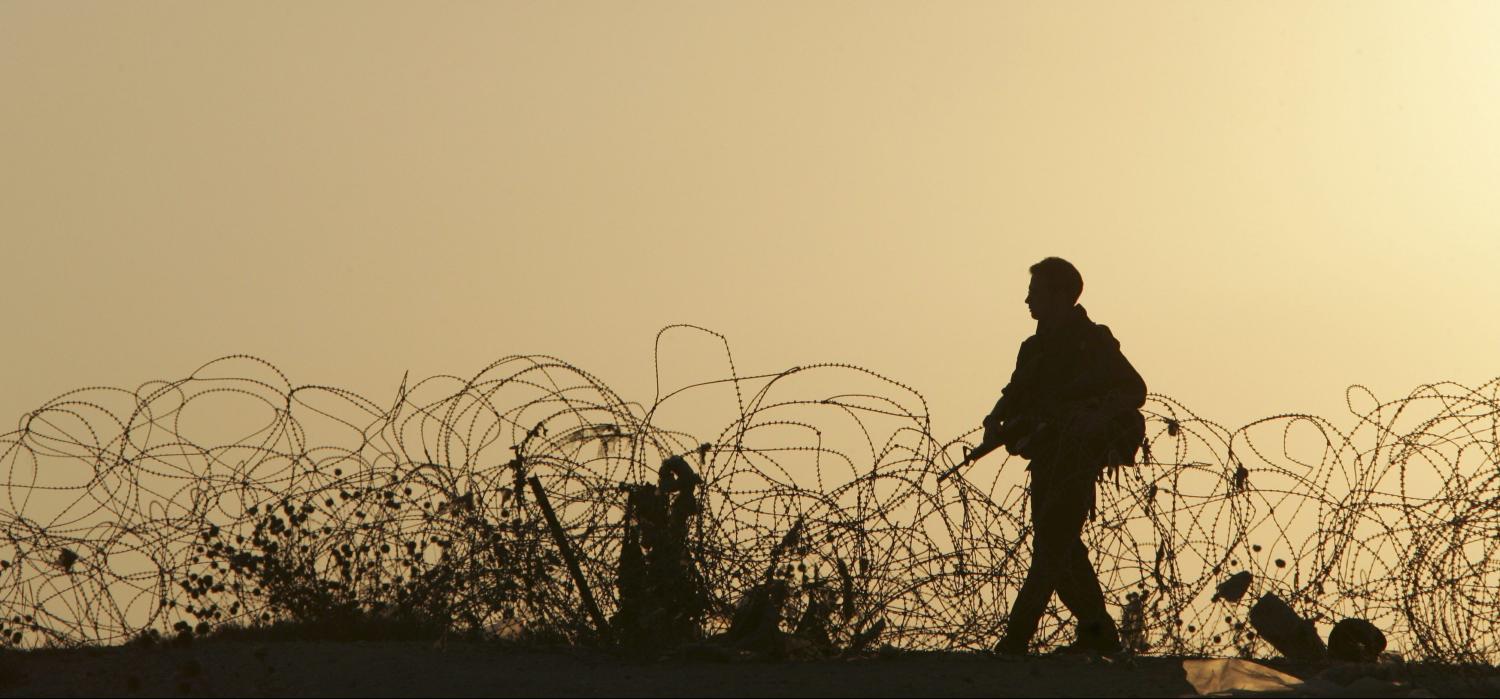
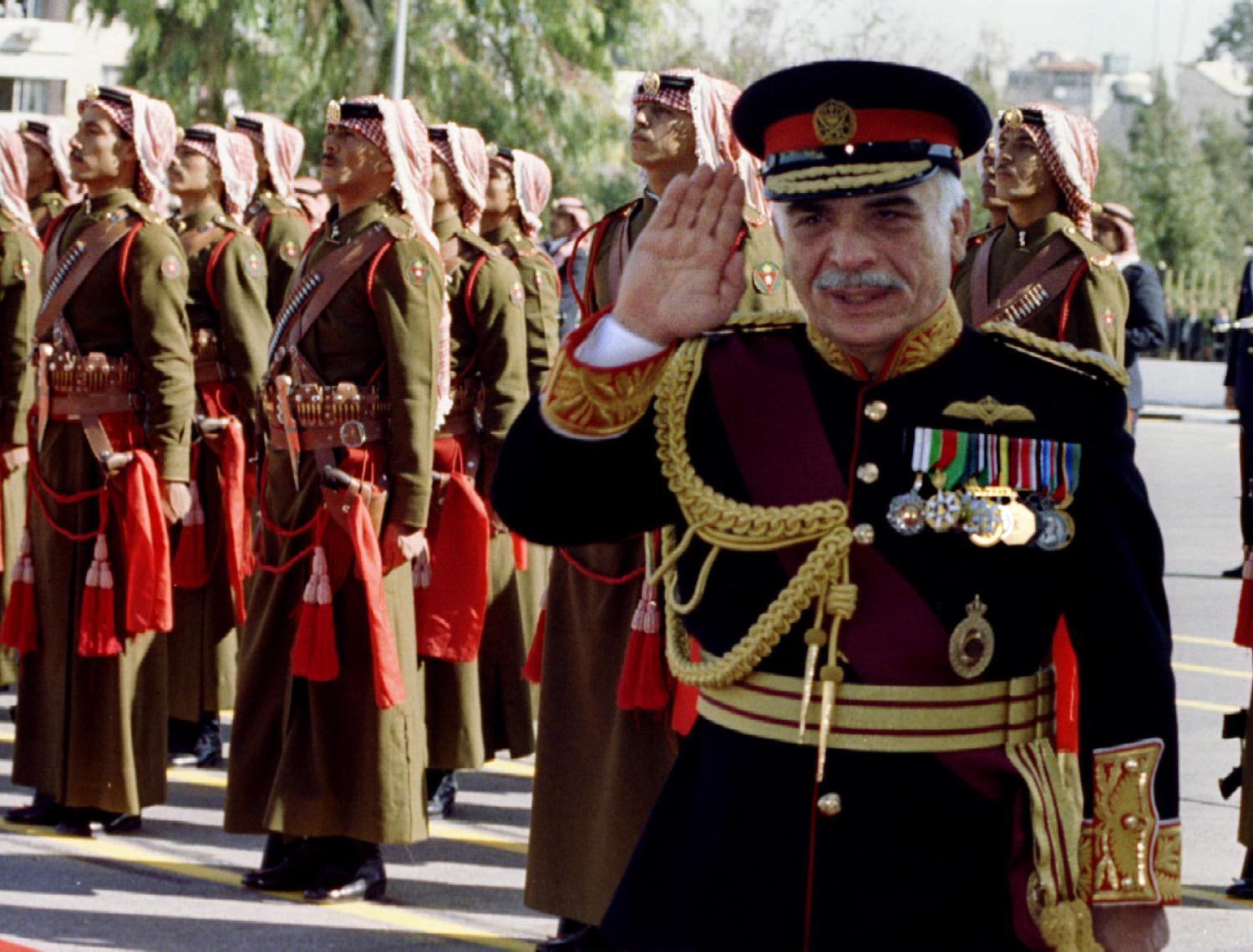
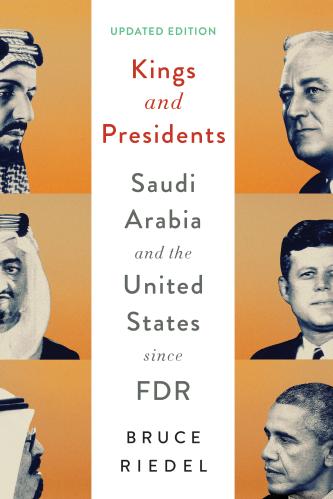
![- FILE PHOTO 21NOV73 - Prime Minister Golda Meir (R) accompanied by her Defense Minister Moshe Dayan, meets with Israeli soldiers at a base on the Golan Heights after intense fighting during the 1973 Yom Kippur War.[ Israel was simultaneously attacked by Syria and Egypt on Yom Kippur, the Jewish Day of Atonement when all of Israel comes to a standstill, and was only able to defeat both countries when the United States provided an emergency major resupply of equipment. Israel suffered heavy causalities and many Israelis were angered at the country's unpreparedness. ] Israel celebrates its 50th Golden Jubilee anniversary on April 30, according to the Hebrew calendar. - RTXIE3D](https://www.brookings.edu/wp-content/uploads/2017/08/golda_meir001.jpg?quality=75&w=1500)
